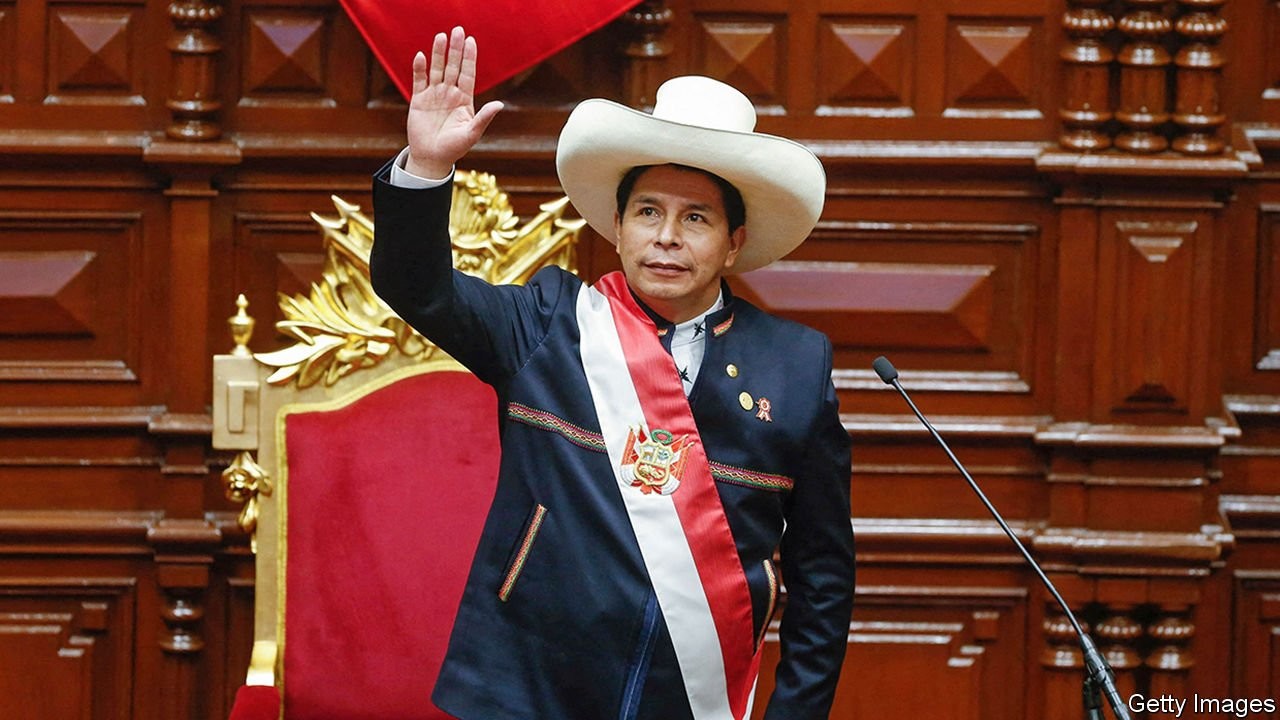“Open the door so the next bicentennial is full of hope, with a future and a vision for a country in which we all enjoy and eat from the bread of the country,” President of Peru Pedro Castillo urged during his 2021 presidential campaign. Castillo, Peru’s fifth president in four years, presented himself as a clean start for the South American nation, which has suffered the ills of rampant corruption and political instability in recent years. Less than a year into his administration, however, his vision remains unfulfilled.
After just six months in office, Castillo has sworn in his fourth cabinet, marking the latest in a string of politically unstable moments for his administration. Some rightist and centrist parties advocate for Castillo’s removal from office as an answer to the current crisis, but this is not a meaningful solution. New elections and a new president will not address the root of Peru’s political upheaval. Rather, the causes of instability are deeper institutional problems that lie in impeachment procedures and the balance of power between the executive and legislative branches.
Since 2016, the Peruvian Congress has established a precedent that declares “moral incapacity” as grounds for impeachment. While moral incapacity is meant to refer to a president’s mental disability, Congress reinterpreted it to mean literal immorality, which has allowed them to manipulate the impeachment process into a political tool. The lack of oversight in the impeachment process means Congress is largely unrestrained in using the threat of impeachment as a political opposition strategy.
The flaws in impeachment procedures came on full display in 2020 when Martín Vizcarra, one of the most popular presidents of his generation, was voted out by Congress despite three-fourths of Peruvians believing he should stay in charge. The grounds of moral incapacity give the Peruvian legislature an immense amount of power to depose presidents with whom they are at political odds. The threat of impeachment constrains Castillo’s administration as well: To fend off impeachment attempts, he has had to restructure his cabinet to forge political alliances. Castillo’s cabinet woes thus reflect how flawed institutions in Peru have sunk their teeth into his administration.
Castillo has chosen ministers based on their affiliation to political groups to avoid the real possibility of impeachment and prevent his opposition from growing in Congress. Selected based on alliances, many of Castillo’s ministers lack real experience or credentials in the sector they lead, causing high turnover and overall incompetency. This cabinet mayhem, spurred by the looming threat of impeachment, has led Castillo to cultivate a “shadow cabinet” that secretly advises him, further hindering effective governance. Without institutional reforms to redefine stricter impeachment grounds and the relationship between the executive and legislative branches, Castillo’s successors will fall prey to a similar crisis.
Former prime minister Mirtha Vásquez, among other resigned senior officials, criticized Castillo for listening more to an inner circle of advisers—his so-called “shadow cabinet”—than his own ministers. They assert that Castillo consults with this informal group of advisers on political decision-making, shutting his official cabinet out and thereby weakening the Peruvian government. Undoubtedly, the shadow cabinet and ministerial turnovers have contributed to the lack of direction in Castillo’s administration, making it difficult for him to advance major policy proposals.
Political elites also itch for impeachment because of Congress’s “silver bullets.” Under this system, Congress only has two opportunities to oppose the president using votes of confidence during one five-year term. Therefore, legislators have limited opportunities to vote against the executive and serve as a check on the executive’s power. The only other option for the opposition lies in impeachment.
If the Peruvian legislature had more avenues for opposing the executive without resorting to impeachment, then some of Peru’s political instability could be quelled. Furthermore, impeachment procedures should be strengthened so that presidents can only be removed on narrow and legitimate grounds, rather than on a political whim. Institutional reforms such as these could rework the incentives and pressures facing politicians so they are better able to govern and deliver progress for Peru.
For many in Peru, a candidate so far removed from establishment politics had to be the answer to political instability. Yet the fact that Castillo fell into the same legacy of political turmoil as his predecessors proves that the cause lies less in ideology and more in institutions. Further, it shows that the growing consensus for his removal and a new presidential election will not solve these problems. Castillo’s successor will be constrained by the same flawed institutions and political pressures which hinder effective governance.
The proposed solution to remove the president, which political elites have implemented in the past, is too near-sighted. Instead, institutional reforms addressing impeachment proceedings and the balance of power between the legislative and the executive must be prioritized. A new election will not lead to better results for the country, as the past five years have plainly shown. If Peru is going to leave its political instability behind, it must shift its focus from elections to institutions.
